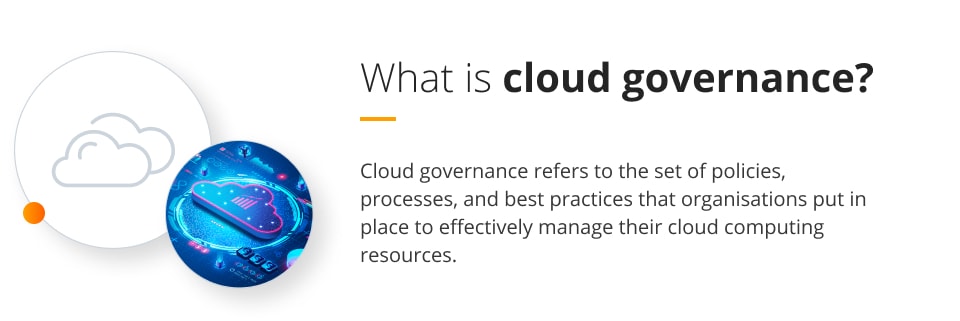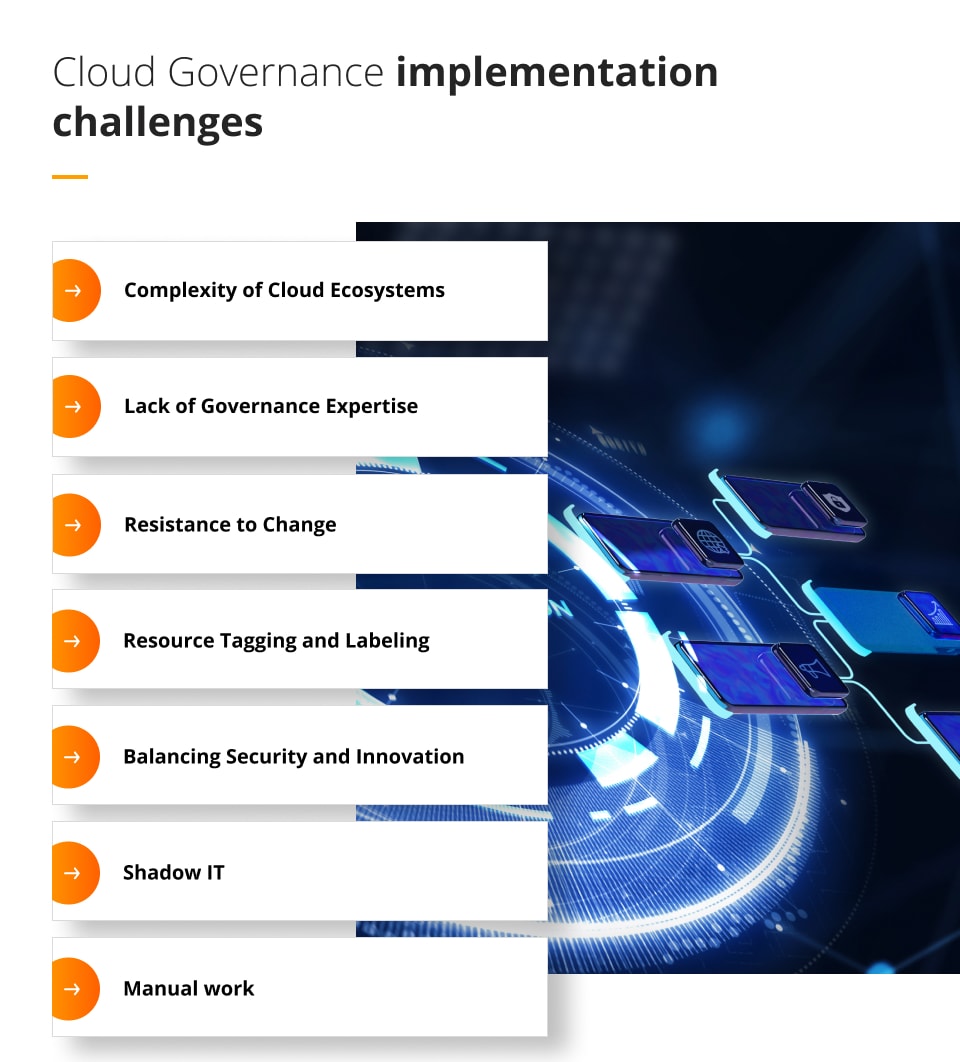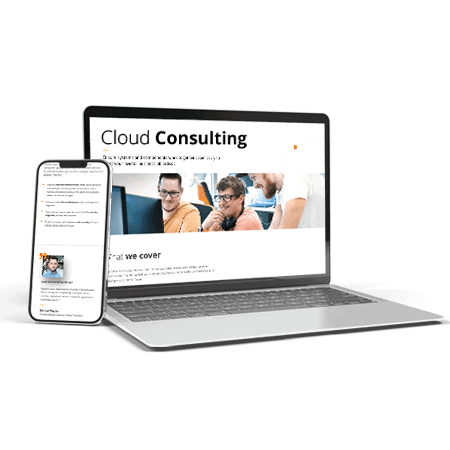
Cloud governance: framework, challenges and benefits
With the ever growing number of companies that switch to the cloud, there is a growing necessity for them to adapt their processes & security policies to this new way of working. This is what cloud governance is all about. Let's dive into details.
What is cloud governance?
Cloud governance refers to the set of policies, processes, and best practices that organisations put in place to effectively manage their cloud computing resources. Cloud data governance is essential to ensure that cloud environments are secure, compliant, cost-efficient, and aligned with an organisation’s business objectives.
It helps organisations maintain control over their cloud infrastructure, applications, and data while optimising resource utilisation.
Why is cloud governance important?
Cloud governance is critically important for several reasons, as it addresses various challenges and risks associated with the migration to cloud. The key reasons for why it is so vital for organisations include:
Security
It helps enforce cloud security policies and controls to protect sensitive data and prevent unauthorised access or breaches. It ensures that data is encrypted, access is restricted, and identity and access management (IAM) policies are in place.
Compliance
Many industries are subject to regulatory requirements (e.g., GDPR, HIPAA, SOC 2). Cloud governance ensures that cloud operations adhere to these regulations, reducing the risk of non-compliance and associated penalties.
Cost optimisation
Effective cloud governance helps organisations control and optimise their cloud spending. By implementing cost monitoring and budgeting mechanisms, organisations can avoid unexpected expenses and optimise resource allocation.
Resource management
Resource efficiency ensures that cloud resources are allocated efficiently, avoiding underutilisation or overprovisioning. This leads to cost savings and improved return on investment (ROI).
Risk management
Risk management is an integral component of cloud governance strategies, aiming to identify, assess, and mitigate potential threats and vulnerabilities in cloud environments to ensure data security and compliance while optimising resource utilisation and cost control.
Operational efficiency
Governance practices automate resource provisioning, modification, and deprovisioning, reducing manual overhead and ensuring resources are used efficiently. Governance also includes monitoring and performance management, which helps identify and address performance issues quickly, ensuring optimal system performance.
Business continuity
Governance practices, such as disaster recovery planning, minimise the risk of data loss and business disruptions in case of disasters or service outages.
Cloud governance framework principles
A well-defined cloud governance framework is essential for organisations to effectively manage their cloud resources and ensure compliance, security, and cost control.
The key principles that underpin a robust cloud governance framework include: alignment with business objectives, clear ownership and accountability, policy development and enforcement, risk managemnet, compliance and regulatory adherence, security controls, cost optimisation, resource lifecycle management, resource tagging and labelling, performance monitoring and optimisation, data management and privacy.
A well-structured governance framework that incorporates these principles helps organisations effectively manage their cloud resources while balancing security, compliance, and cost considerations. It provides a solid foundation for a successful cloud strategy and its management.
Cloud governance implementation challenges
Implementing cloud governance can be a complex and challenging endeavour. While the benefits are substantial, several challenges may arise during the implementation process.
These challenges can vary depending on the organisation’s size, industry, and specific cloud adoption goals.
Some of the most common challenges associated with cloud governance implementation include:
- Complexity of Cloud Ecosystems:
Cloud environments can be highly complex, with multiple cloud service providers, regions, and services. Managing this complexity can be daunting, but the implementation of centralised governance practices and tools will provide visibility and control across the entire cloud ecosystem. - Lack of Governance Expertise:
Many organisations lack in-house expertise in cloud governance best practices and tools, making it challenging to develop and implement effective governance strategies. A good solution is to invest in training and skill development for IT staff or consider partnering with cloud governance consultants or service providers to bridge the expertise gap. - Resistance to Change:
Employees and teams may resist changes in processes and policies brought about by cloud governance, leading to slow adoption or non-compliance. A solution here is to communicate the benefits of cloud governance clearly to all stakeholders, provide training and support, and involve teams in the governance framework’s design and implementation to gain their buy-in. - Resource Tagging and Labelling:
Ensuring consistent resource tagging and labelling practices across the organisation can be challenging, leading to difficulties in tracking resources, cost allocation, and governance enforcement. A way to go about it is to implement automation and enforce tagging policies using cloud provider tools or third-party solutions. - Balancing Security and Innovation:
Striking a balance between robust security controls and the need for innovation and agility can be a challenge. Overly restrictive security policies may hinder innovation. A good solution is to develop a risk-based approach to security that allows for flexibility while maintaining critical security measures. - Shadow IT:
When employees or departments independently procure and use cloud services and resources without the knowledge or approval of the central IT or governance teams, it can create visibility, security, and compliance gaps within the organisation. Addressing this challenge requires establishing clear policies, education, and monitoring to ensure that all cloud usage aligns with organisational standards and requirements. - Manual work:
The reliance on time-consuming, manual processes for managing cloud resources and policies leads to inefficiencies, errors, and difficulties in keeping up with the dynamic nature of cloud environments. To overcome this challenge, organisations need to embrace automation and orchestration solutions to streamline tasks like provisioning, scaling, and policy enforcement, enabling greater agility and control over their cloud infrastructure.
Overcoming these challenges requires a well-thought-out cloud governance strategy, collaboration among different teams and stakeholders, and ongoing monitoring and adaptation as cloud environments evolve.
To address these challenges effectively, cloud governance should be viewed as an ongoing process rather than a one-time project.
Cloud adoption
Cloud governance is an integral part of cloud adoption, ensuring that organisations can harness the benefits of the cloud environment while mitigating risks and maintaining control over their cloud resources and data.
It provides a structured approach to adopting and managing cloud services in a secure, compliant, and cost-effective manner.
Governing data in the cloud
Governing data in the cloud is a critical aspect of cloud governance, especially considering the sensitivity and importance of data in modern business operations.
Effectively managing data in the cloud environment involves a combination of policies, practices, and technologies to ensure data security, compliance, availability, and privacy.
Some key considerations for governing data in the cloud include data classification, data encryption, access control and authentication, data privacy and compliance, data backups and recovery, data lifecycle management.
By implementing robust data governance practices, organisations can maintain data integrity, security, and compliance while harnessing the benefits of cloud technologies.
How to begin, what’s the end game?
Beginning cloud governance involves a structured approach to define policies, processes, and controls for managing cloud resources effectively, securely, and in alignment with organisational goals.
The end game is to establish a well-defined framework that enables continuous optimisation, risk mitigation, and efficient use of cloud resources while ensuring data security, compliance, and cost control. What’s in the middle is a long process and hard work, best if done by professionals with adequate experience.
If you are keen to start thinking about your cloud governance model, get in touch with our team. At Future Processing, we offer a wide range of cloud services, tailored to your needs and requirements. We will be happy to assist you at any stage of your journey.







